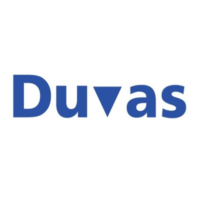Governance of Enterprise IT – from the Pain Points to the Business Case
November 16, 2016

“The practice of good governance provides the direction required to achieve desired outcomes”
From the pain points and triggers identified and their possible damage to or impact upon the organisation, a business case can be built for the implementation of Governance of Enterprise IT.
by Charles Chirchir, 16th November 2016
In today’s highly interconnected and technology-enabled world, organisations are rapidly realizing that their digital presence and ability to protect critical functions and information are as important to their ability to remain competitive as the product and service they produce.
Further, there are multiple frame works -security, privacy, compliance, risk etc.- seeking to address and help direct and monitor optimization in support of these bleeding edge business drivers.
Question is, how do organisations determine the following:
– The extent to which their business goals are dependent on technology?
– That the enterprise’s technology resources are effectively utilised to realise business goals?
– Alternatives that the enterprise could use to make them nimbler, more agile or better equipped to respond to market pressures or customer demand?
– That the technology they have in place is providing value and realising the expected return on investment?
Systematically answering these and other related questions will bring many benefits among them more effective and efficient use of resources, greater control and overall better strategic alignment and risk management.
Governance of Enterprise IT (GEIT) is an industry practice that is rapidly gaining adoption to systematically address the above questions. The need for GEIT is usually recognised because of pain points such as:
– Failed initiatives, rising costs of IT and perception of low business value
– Significant incidences related to IT risk and security e.g. data loss or project failure
– Service delivery problems by outsourced providers
– Failure to meet regulators or contractual requirements
– Audit findings for poor IT performance or low service levels
– Hidden and/or rogue IT spending
– Resources waste through duplication and overlap in IT initiatives
– Insufficient IT resources, and inadequate skills or staff burn out or dissatisfaction
– Multiple and complex IT assurance efforts
– Reluctance of board members or senior managers to engage with IT
Trigger events are a second set of factors that signify an improvement opportunity, some examples of trigger events are:
– Merger, acquisition or divesture
– Shift in the market, economy or competitive position
– Change in the business operating model or sourcing arrangement
– New regulatory or compliance requirement or a new business strategy
– Significant technology change or paradigm shift
– External Audit or consultant assessment
From the pain points and or triggers identified and their possible damage to or impact upon the organisation, a business case can be built for the implementation of Governance of Enterprise IT and a business case developed on this basis sets a foundation such that the desired end state can be achieved.
To find out more about how Accelerate Evolution can help your organization to design and implement a successful Enterprise Information Technology Governance structure click here to contact us.
Partially re-published from “A primer for Implementing Governance of Enterprise IT” by ISACA 2016
Popular Tags
- business operations management change management coaching & training commercial operations management Finance & GRC GEIT human capital management Information Technology interim management IT Governance Legal management advisory Marketing & Positioning project management Regulatory strategy & business transformation supply chain & logistics



























